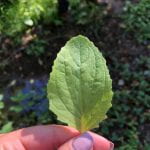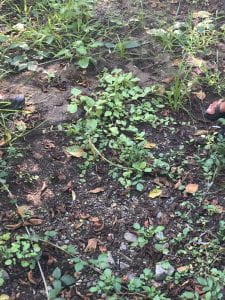September 24, 2019
The first stop on our field trip was Mount Tamalpais. When we first pulled into this area, we saw that there was a natural stream of water coming from the mountain. Here we were able to observe a large costal parenial Mimulus. It was important to note that, we found these mats or patches of Mimulus directly next to the water source. Mimulus loves to keep its feet wet so it is not surprising that we found Mimulus near a spring. In a location like Mount Tamalpais, we were able to see how important the bee population is. Usually, the bees are the ones to pollinate the flowers along this mountain side, including Mimulus, which promotes intrabreeding and interbreeding amongst plant species. We saw that the baby Mimulus did not have much space to “move” or pollinate on its own so, it is vital that bees are able to pollinate around the mountain.
Professor Paul brought it to our attention that the Mimulus population we saw could be a sink population. This means that the population would thrive near a body of water but may get flooded out by rainfall before they are able to flower. Additionally, Alec shared that in drought years, Mimulus may thrive better because they have a longer time to flower and germinate their seeds. This would be beneficial because these Mimulus would be more likely to contribute to the next generation. I was able to learn that Mimulus responds to long day periods but this time of year, there are shorter day periods so, it may not be long enough for these Mimulus to get the proper environmental cues to grow and persist.
We then drove a few miles away from the mountain to a location called Redwood Creek. The creek was well shaded and made for a cool and moist environment with patches of sunlight for Mimulus. Our task in this location was to find a Mimulus population that was growing along this creek. The class as a whole was not able to locate these populations but, we managed to find a few small Mimulus with the help of a few careful eyes. At Redwood creek, it seemed that the populations of Mimulus that we found were much smaller and hidden than the past populations that we had seen. It was explained to us that plant species that live along Redwood creek are susceptible to flooding during the winter time. This, again, is detrimental to Mimulus because they are not able to properly germinate and contribute to future generations. Since the creek stretches for miles, it is apparent that the separated populations of Mimulus have been limited on insect pollinators that are able to travel long distances to pollinate.




